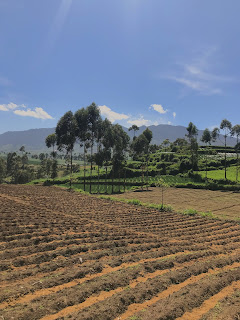spiny bush viper.
| Kingdom: | Animalia |
| Phylum: | Chordata |
| Class: | Reptilia |
| Order: | Squamata |
| Suborder: | Serpentes |
| Family: | Viperidae |
| Genus: | Atheris |
| Species: | A. hispida |
PHYSICAL DESCRIPTION
In addition to a small size, the Spiny Bush Viper displays a moderate degree of sexual dimorphism. Males attain an average length of approximately 73 cm, while females only average 58 cm. Furthermore, the males have a much more slender shape than the females.
The head has a short snout (more so in males than females). The species also has relatively large eyes. The coloring varies significantly between individuals and typically includes shades of blue, green, and brown. This often leads people to mistake individual snakes for members of differing species.
PREY
PREY
This snake hunts as an ambush predator and likes to perch on reeds and small bushes.Spiny bush viper is an ambush predator. It uses its venomous fangs to kill the prey. Before the attack, spiny bush snake curls its body in the shape of a letter S. They will also use their highly prehensile tails to hang from tree limbs, waiting to strike at prey. Its prey primarily consists of birds, rodents, lizards, and frogs, the majority of which become active at night
FACTS
SOURCES
- Females give birth between March and April, often to up to 12 young at a time.
- Spiny bush viper is excellent climber. It easily reaches upper part of the flowering bushy plants, where it spends most of its day, basking in the sun.
- Spiny bush viper is nocturnal creature (active during the night).
- Spiny bush viper produces strong venom which induces severe bleeding of internal organs. Amount and strength of the venom depend on the age of snake, geographic region, altitude and even weather.
- Snakebite may be fatal for humans because antidote for this venom doesn't exist. Luckily, people rarely visit isolated and remote habitats of Central Africa where spiny bush viper can be found.
- Female gives birth to 9 to 12 babies usually from March to April. Spiny bush vipers are 6 inches long at birth and have dark green bodies covered in wavy stripes. Young snakes attain adult coloration at the age of 3 to 4 months.
- Spiny bush vipers can survive 10 to 12 years in the captivity.
https://www.ourbreathingplanet.com/spiny-bush-viper/?gclid=Cj0KCQjwvOzOBRDGARIsAICjxoeIHEeTo0UxU8C1Nj2Z7JuugeYm2HDATeYwtIzPZ04usxAcqUOsyGgaAm2mEALw_wcB
http://www.softschools.com/facts/animals/spiny_bush_viper_facts/920/
https://en.wikipedia.org/wiki/Atheris_hispida
QUESTIONS
QUESTIONS
1.
What type of
snake is spiny bush viper?
a.
Non-venomous
snake
b.
Tame snake
c.
Venomous snake
d.
Omnivorous snake
e.
Giant snake
2.
What is the
difference between the males and the females?
a.
Eyes, weight,
scales
b.
Snout, length,
body shape
c.
Length, eyes,
venom
d.
Body shape,
tongue, organ
e.
Venom, snout,
length
3.
What are they
doing before attacking the prey?
a.
Curls its body
in the shape of letter S
b.
Hides in bushed
and reeds
c.
Picks out its
prey
d.
Searching for
their friends
e.
Warm up its body
by climbing up a tree
4.
Where does spiny
bush viper originates from?
a.
America
b.
Asia
c.
Europe
d.
North China
e.
Africa
5.
How long does
spiny bush viper usually survives?
a.
5-8 years
b.
1-3 years
c.
10-12 years
d.
14-20 years
e.
13-15 years



Comments
Post a Comment